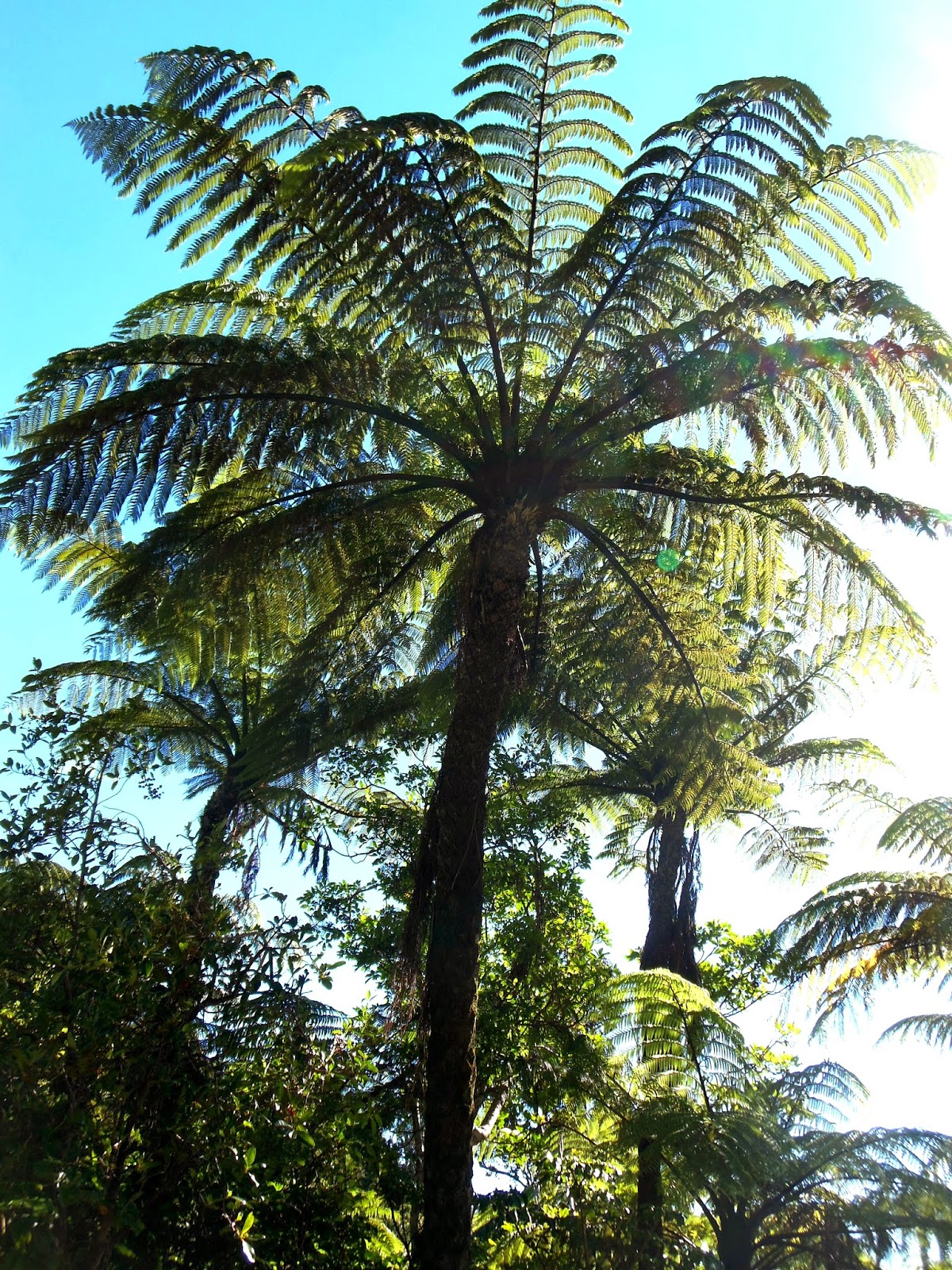
Western Washington has a lot of ferns, but New Zealand has about 200 native species of them. They grow everywhere except some of the very dry eastern seaboard. Ferns are prominent and distinctive features of the amazing landscape. Ferns date back over 500 million years. They were around prior to any flowering plants.
Botanists have classified and reclassified ferns over the years, with disputes on how to determine which is related to which others. In general, they have fronds (leaves) which uncurl as they develop, but not always. The size, shape and positioning of spores help define each species, as well as just how the fronds branch or fork. Then there are “fern allies”, which are not ferns at all, but botanists don’t know where else to put them. They reproduce with spores, but their fossil history predates that of ferns. Some are like mosses, except that they reproduce with spores, which mosses definitely do not.
There are ferns and there are ferns. In NZ the most dramatic are tree ferns. They range from ground creepers to 20 meters tall. That is about 65 feet!
One of the most distinctive and easily recognizable is the Silver Tree Fern. It is found all over the North Island and primarily along the northern coast of the South Island. The undersides of the fronds - leaves which are up to 24 long - are definitely silver colored by the time the tree is about 2 years old. The aboriginal Maori used them to roof their homes, for a variety of medicinal purposes, and placed them on the ground to point to way to food, water, enemy encampments, etc. No wonder then that is the national emblem of the country.
One of the most distinctive and easily recognizable is the Silver Tree Fern. It is found all over the North Island and primarily along the northern coast of the South Island. The undersides of the fronds - leaves which are up to 24 long - are definitely silver colored by the time the tree is about 2 years old. The aboriginal Maori used them to roof their homes, for a variety of medicinal purposes, and placed them on the ground to point to way to food, water, enemy encampments, etc. No wonder then that is the national emblem of the country.

On a historical/politcal/social note, the North Island has always been home to a larger population and certainly with British settlers, it was the preferred location. The Kiwi, a bird, not the nickname for citizens or the fruit grown all over here, was not chosen as a national emblem partially because it is shy, only comes out at night, and is easy prey as a flightless, large ground-nesting bird.
Here’s some other ferns we saw, saving the rest of the tree ferns for last:
Hen and Chickens - one of Carol's favorites in part because it is easily recognized. We saw them mainly on Stewart Island, off the southern tip of the South Island, and the first place we went when down south. The "chickens" take root to form new plants, very unfernlike, as ferns are supposed to reproduce via spores, which the plant also manages to do.
Neckless Fern - charming type of spleenwort. It's extended ribs also take root to form new plants.
Fork Fern - the first plant to produce lignin, a substance that allowed plant stems to become woody or hard, an evolutionary breakthrough of sorts.
 |
| Bushmans' Mattress - unusual because it climbs over smaller shrubs and even tall forest trees. What looks like woody stems are actually ribs of fronds. You could fool us. |
 |
| Peretao - easily recognized because only its spores give away that it is a fern. |
 |
| Tangle Fern - many species of them, all with narrow frond segments. In the foreground is a reproductive frond. |

Pacific Azola - free floats on water with rootlets hanging, does not attach to anything solid, waterfowl spread them around as they travel from pond to lake to stream, another unfernlike fern.
Wheki - most common tree fern with a slender black trunk and skirt of dead fronds and a vase shaped crown of fronds. It grows to 7 meters in height.

Gully Fern - 20 meters tall with small and few fronds when fully grown...a babe in the woods with Roger
and huge fronds 2.5 to 6 meters long,
those are over 18 ft long leaves
Mamaku growing over the forest canopy. They can be over 65 feet tall.
 |
| Generic Young Tree Fern - Carol can't get enough of them. They are incredibly beautiful when viewed in the bush. |














No comments:
Post a Comment